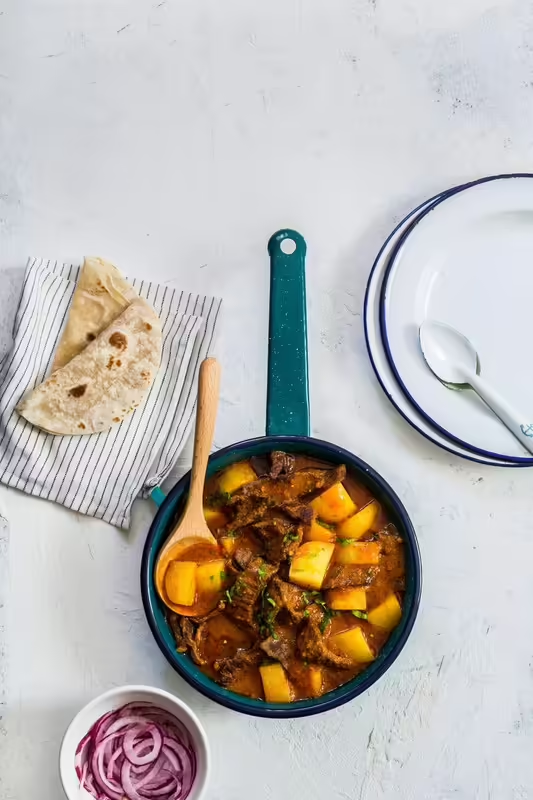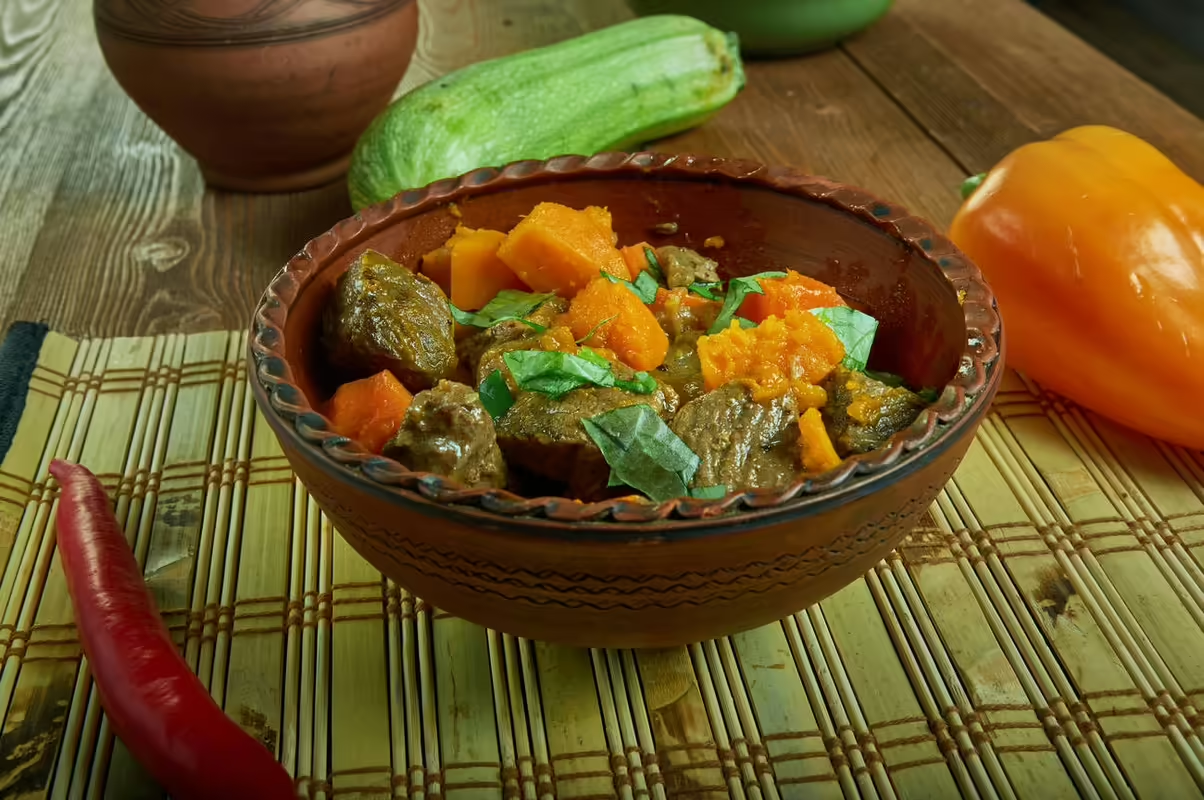Discover Delicious Carne Guisada: Recipe and Tips
Carne Guisada, a rich and flavorful meat stew, holds a cherished place in kitchens across Latino and Hispanic communities. This slow-cooked dish, often made with tender cuts of beef, simmered in a tantalizing blend of spices, vegetables, and broth, showcases the depth and complexity of traditional Latino cuisine. Whether enjoyed in a cozy family setting or at festive gatherings, Carne Guisada offers comfort and culinary heritage in every bite, transcending borders and generations.
The significance of Carne Guisada goes beyond the confines of the kitchen. In many Latino and Hispanic cultures, it represents more than just a meal; it is a symbol of tradition, family, and communal gatherings. Each region adds its unique twist, making Carne Guisada a versatile and personalized dish that reflects the local palate and ingredients. From the hearty Tex-Mex version to the robust Puerto Rican and Mexican variations, the dish adapts beautifully to regional preferences, highlighting the rich culinary diversity within and across cultures.
In this article, we will delve into the essence of Carne Guisada, exploring its origins, the variety of regional adaptations, and the essential ingredients that bring out its distinct flavors. We will walk you through the techniques to master its preparation, offering a detailed recipe that balances authenticity with practical cooking tips. Additionally, we will touch on nutritional insights, cultural significance, and frequently asked questions to provide a comprehensive understanding of this beloved dish. By the end, you’ll not only have a recipe but also a deeper appreciation for Carne Guisada’s place in the culinary world.

What is Carne Guisada?
Carne Guisada is a hearty meat stew that captivates palates with its tender meat, aromatic spices, and rich, savory broth. The term “Carne Guisada” translates to “meat stew” in English, encompassing a variety of preparations across different cultures. Traditionally made with beef, this dish is characterized by hours of slow cooking, allowing the meat to become melt-in-your-mouth tender while absorbing the flavors from vegetables and spices. The result is a comforting, robust dish that is both satisfying and nourishing.
Regional variations of Carne Guisada contribute to its rich tapestry in Latino and Hispanic cuisines. In Mexico, it often features spices like jalapeños or chipotle, adding a subtle heat to the stew. The Puerto Rican version may incorporate additional ingredients like olives and capers, introducing a tangy twist. Meanwhile, the Tex-Mex style is known for using a thicker gravy, often served alongside rice or in tacos, showcasing the adaptability of Carne Guisada to local tastes and traditions. Each version reflects the unique culinary influences and preferences of the region it comes from, creating a diverse array of comforting dishes under the same name.
The historical context of Carne Guisada reveals its significance as a communal dish, often prepared for family gatherings and celebrations. The art of making Carne Guisada has been passed down through generations, becoming a symbol of cultural heritage and familial bonds. It not only nourishes the body but also fosters connections, as families come together to enjoy this beloved meal. Additionally, Carne Guisada serves as a reminder of the agricultural roots in many Latino communities, where local ingredients shine in every bite.
Key Ingredients in Carne Guisada
The soul of Carne Guisada lies in its ingredients, which can vary from one region to another but typically include a delightful combination of meat, vegetables, and spices. The primary protein for this dish is usually beef, with cuts such as beef chuck or flank steak being favored for their tenderness. These cuts, when slow-cooked, develop deep flavor and texture, essential for a successful Carne Guisada.
Vegetables play a crucial role in adding depth to the stew. Essential components often include:
- Onions: They bring sweetness and flavor when caramelized.
- Bell Peppers: These contribute both color and a mild, sweet flavor.
- Garlic: A staple in many cuisines, garlic enhances the savory quality of the dish.
- Tomatoes: Fresh or canned, tomatoes add acidity and richness to the broth.
In addition to these core ingredients, various spices and herbs are used to create the signature flavor of Carne Guisada. Common seasonings include:
- Cumin: Its earthy notes are essential in many Latino dishes.
- Bay Leaves: Added during cooking, they impart a subtle aroma.
- Paprika: This adds a mild spice and vibrant color.
- Oregano: A prominent herb in Latin American cooking that brightens the stew.
Liquid components are equally important for creating the base of the stew. Common choices include beef broth, which adds richness, or beer and wine, which contribute unique flavors. Optional additions like potatoes or carrots can also enhance the dish’s heartiness.
Using high-quality ingredients is key to achieving a flavorful Carne Guisada. Choosing fresh, locally sourced vegetables and quality cuts of meat not only improves the dish’s taste but also honors the culinary traditions it represents. When sourcing ingredients, consider visiting local farmer’s markets or specialty stores to ensure you are getting the best flavor potential.
Key Ingredients in Carne Guisada
The soul of Carne Guisada lies in its ingredients, which can vary from one region to another but typically include a delightful combination of meat, vegetables, and spices. The primary protein for this dish is usually beef, with cuts such as beef chuck or flank steak being favored for their tenderness. These cuts, when slow-cooked, develop deep flavor and texture, essential for a successful Carne Guisada.
Vegetables play a crucial role in adding depth to the stew. Essential components often include:
- Onions: They bring sweetness and flavor when caramelized.
- Bell Peppers: These contribute both color and a mild, sweet flavor.
- Garlic: A staple in many cuisines, garlic enhances the savory quality of the dish.
- Tomatoes: Fresh or canned, tomatoes add acidity and richness to the broth.
In addition to these core ingredients, various spices and herbs are used to create the signature flavor of Carne Guisada. Common seasonings include:
- Cumin: Its earthy notes are essential in many Latino dishes.
- Bay Leaves: Added during cooking, they impart a subtle aroma.
- Paprika: This adds a mild spice and vibrant color.
- Oregano: A prominent herb in Latin American cooking that brightens the stew.
Liquid components are equally important for creating the base of the stew. Common choices include beef broth, which adds richness, or beer and wine, which contribute unique flavors. Optional additions like potatoes or carrots can also enhance the dish’s heartiness.
Using high-quality ingredients is key to achieving a flavorful Carne Guisada. Choosing fresh, locally sourced vegetables and quality cuts of meat not only improves the dish’s taste but also honors the culinary traditions it represents. When sourcing ingredients, consider visiting local farmer’s markets or specialty stores to ensure you are getting the best flavor potential.
Carne Guisada Cooking Techniques
Preparing Carne Guisada involves several essential cooking techniques that enhance flavor and texture. The primary method is braising, which combines both dry and wet heat. Start by searing the meat in oil until browned, which activates the Maillard reaction, creating a rich flavor base. This initial step is crucial for achieving depth in your stew.
Once the meat is browned, add the vegetables and spices, allowing them to soften and release their fragrances. This step builds upon the flavor profile you started with during the browning process. After the vegetables are incorporated, it’s time to add the liquid components, such as beef broth or other alternatives. The stew is then simmered over low heat for an extended period, allowing the flavors to meld and the meat to become incredibly tender.
When optimizing cooking time for tender meat, it’s essential to balance cooking duration with temperature. Cooking at too high a temperature can toughen the meat instead of tenderizing it. A low and slow approach is key—aim for a simmer rather than a vigorous boil. Depending on the cut and size of your meat pieces, expect cooking times to vary, but generally, a few hours will yield the desired tenderness.
Additionally, consider using tools like a slow cooker or pressure cooker if you seek alternatives to traditional methods. These can provide a more hands-off approach while still allowing you to achieve that melt-in-your-mouth texture characteristic of an authentic Carne Guisada.

Carne Guisada
Equipment
- 1 large pot or Dutch oven
- 1 cutting board
- 1 measuring cups and spoons
- 1 ladle
Ingredients
- 2 lbs beef chuck, cut into 1-inch cubes
- 3 tablespoons olive oil
- 1 medium onion, diced
- 3 cloves garlic, minced
- 1 bell pepper, diced any color
- 2 medium tomatoes, diced
- 2 cups beef broth
- 1 tablespoon tomato paste
- 1 teaspoon ground cumin
- 1 teaspoon paprika
- 1 teaspoon dried oregano
- 1 bay leaf
- to taste salt
- to taste black pepper
- 2 tablespoons chopped fresh cilantro for garnish
Instructions
- Heat the olive oil in a large pot or Dutch oven over medium-high heat. Once hot, add the beef cubes in batches, browning them on all sides. Remove the browned beef and set aside.
- In the same pot, add the diced onion and bell pepper. Sauté until the onion is translucent, about 5 minutes. Add the minced garlic and cook for an additional minute.
- Return the browned beef to the pot. Stir in the diced tomatoes, beef broth, tomato paste, cumin, paprika, oregano, bay leaf, salt, and black pepper.
- Bring the mixture to a boil, then reduce heat to low. Cover and simmer for about 90 minutes, or until the beef is tender and the flavors have melded together. Stir occasionally and check for seasoning.
- Once done, remove the bay leaf and taste for seasoning, adjusting salt and pepper as needed.
- Serve hot, garnished with chopped cilantro. Recommend serving over rice or with warm tortillas.
- For extra flavor, feel free to add a splash of lime juice before serving.







